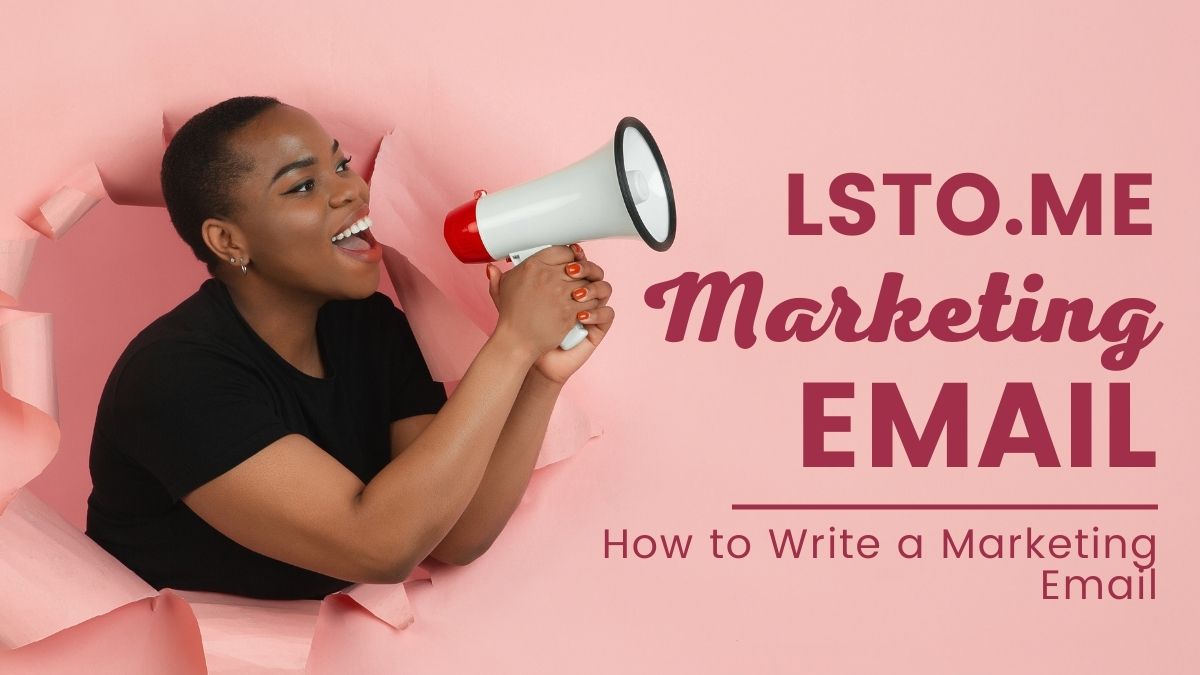
Email marketing can be an incredibly effective way to promote your business, reach your target audience, and generate leads. However, crafting the perfect marketing email can be challenging. With so many messages flooding people’s inboxes, it’s essential to create emails that stand out, capture attention, and inspire action. Here’s how to write a marketing email that gets results.
1. Start with a clear objective
When it comes to writing a marketing email, the first step should always be to set a clear objective. This objective will guide your entire email, from the subject line to the call to action at the end. Without a clear objective, your email may lack focus and fail to achieve its intended purpose.
To start defining your objective, consider what you want your email to accomplish. Do you want to drive traffic to your website? Increase sales of a specific product or service? Build brand awareness? Once you have identified your primary goal, you can begin crafting an email that supports that objective.
Keep in mind that while you may have multiple objectives for an individual email, it’s best to focus on one key goal per message. This allows you to create a concise and compelling message that resonates with your audience and increases the chances of achieving your desired outcome.
2. Craft a compelling subject line
In today’s digital age, email marketing has become an essential tool for businesses to reach out to their target audience. However, crafting a compelling subject line can be the difference between your email being opened or sent straight to the trash folder. People receive numerous emails every day, so it’s crucial to catch their attention with a subject line that stands out.
To write an effective subject line, keep it short and sweet. Aim for no more than 50 characters; otherwise, it might get cut off on mobile devices or in email previews. Use descriptive language that accurately represents the content inside the email while also piquing the recipient’s curiosity. Avoid using all caps or too many exclamation points as this may come off as spammy and unprofessional.
Remember that your subject line isn’t just about getting people to open your email; it’s also about setting expectations for what they’ll find inside.
3. Use a conversational tone
When it comes to writing marketing emails, one of the best ways to capture your audience’s attention is by using a conversational tone. People don’t want to feel like they’re being marketed to; they want to feel like they’re having a conversation with a person. By using a conversational tone in your email copy, you can create an emotional connection with your readers and make them more likely to engage with your message.
The first step in using a conversational tone is understanding who you are writing for. Think about the demographics of your target audience and what language or phrases might resonate with them. Use this information to craft copy that sounds like it was written specifically for them. Avoid industry jargon or overly formal language that may be confusing or off-putting. Instead, use words and phrases that people commonly use in everyday conversations.
4. Personalize your message
Personalization is the key to building strong relationships with your audience. In email marketing, it’s important to make each recipient feel like they’re receiving a message that’s meant for them specifically. One of the easiest ways to achieve this is by using their name in the subject line and greeting. This simple touch can help increase open rates and engagement.
But personalization goes beyond just using someone’s name. It also means tailoring your message to their specific interests or needs. This can be done through segmentation, where you group subscribers based on their demographics, behavior, or past interactions with your brand. By sending targeted messages to these groups, you’ll be able to provide more relevant content that resonates with them on a deeper level.
Ultimately, personalizing your marketing emails shows that you care about your audience and are willing to go the extra mile for them.
5. Highlight the benefits
When it comes to writing a marketing email, the most important thing you need to remember is that your message should focus on the benefits of your product or service. While it’s certainly important to highlight the features of what you’re selling, it’s ultimately the benefits that will resonate with potential customers and motivate them to take action.
To do this effectively, start by really honing in on what problems your offering can solve. What pain points does your audience have, and how can you position your product or service as the solution? By getting clear on these points, you’ll be able to craft messaging that speaks directly to your target market and resonates with them on a deeper level.
When crafting your email copy, use language that emphasizes these benefits. Highlight specific outcomes that customers can expect when they use your product or service – whether that’s increased productivity, improved health, and wellness, or greater financial security.
6. Include a clear call-to-action
When it comes to writing a marketing email, one of the most important parts of your message is the call to action. This is the part where you tell your readers what you want them to do after they’ve finished reading your email. Without a clear and concise call to action, your message may not have any impact on your audience.
Including a call-to-action in your marketing emails is essential because it helps guide your readers toward taking action. Whether you want them to sign up for a free trial or visit your website, including an effective call-to-action can help increase conversions and sales. Your call to action should be easy to understand and visually appealing so that readers are motivated to take action.
In addition, including multiple calls-to-action in different parts of your email can also be effective.
7. Keep it short and sweet
As a marketer, it’s essential to keep your emails short and sweet. People are bombarded with information every day, and they don’t have the time or patience to read lengthy emails. That’s why it’s crucial to make sure your message is clear and concise.
When writing a marketing email, be sure to get straight to the point. Start with a catchy subject line that will grab their attention and entice them to open the email. Then, in the body of the email, keep your message brief and straightforward.
Remember that people skim over emails quickly, so you want to make sure you’re getting your point across in as few words as possible. Use bullet points or short paragraphs to break up your content into manageable chunks. By keeping your email short and sweet, you’ll increase the chances of it being read and acted upon by your target audience.
8. Test and refine
As a marketer or business owner, sending out marketing emails is essential to staying connected with your audience and driving sales. However, simply blasting out generic emails won’t cut it if you want to see results. To truly capture the attention of your subscribers and get them to take action, it’s important to test and refine your email strategy.
One effective way to do this is by experimenting with different subject lines. Your subject line plays a crucial role in determining whether or not someone will open your email. Try A/B testing different subject lines on a small portion of your list before sending out the final version. This can help you determine what type of language, tone, and even emojis resonate best with your audience.
In addition to subject lines, there are other elements of an email that you can experiment with such as the layout, call-to-action placement, and wording.
Conclusion
Writing a marketing email is both an art and a science. By following these tips and focusing on your audience’s needs and interests, you can create emails that stand out, engage readers, and inspire action. Remember to stay true to your brand’s voice and values and keep testing and refining your approach over time.




